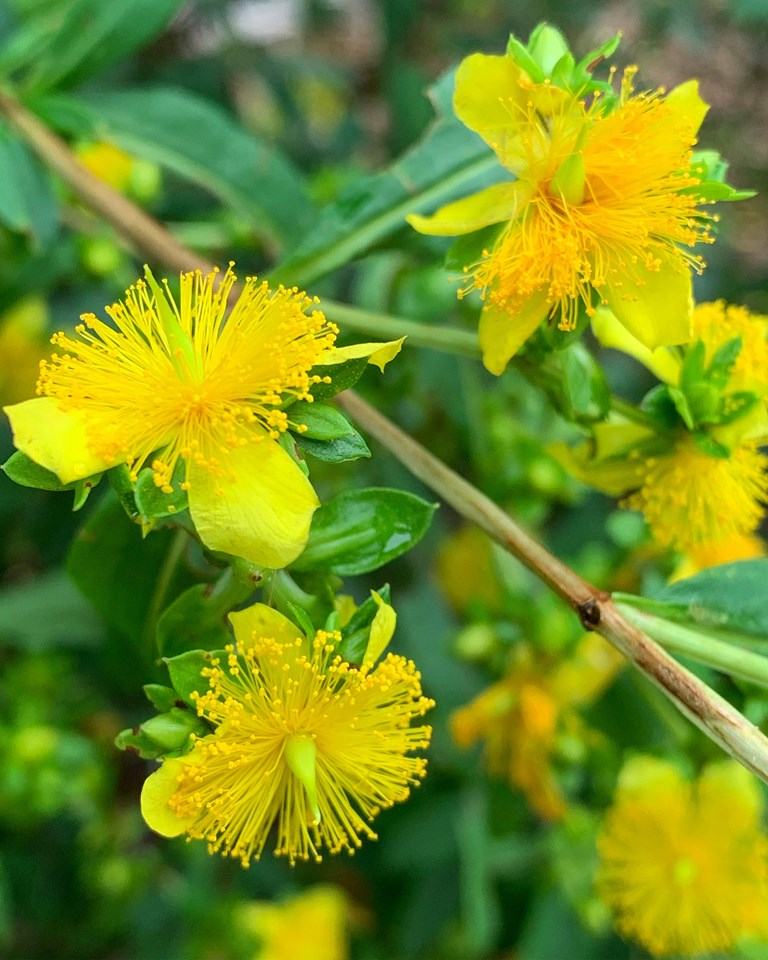As interest grows in native plants, some gardeners may be wondering what kinds of options are available to add to their own backyards. From our experts at the William T. Kemper Home Gardening Center comes a suggestion for a native, flowering shrub with an eye-catching bark: Hypericum prolificum, or St. John’s wort.

The unique, layered bark of St. John’s wort makes it an eye-catching plant all year round. Photo by Justine Kandra.
Where is it found?
St. John’s wort is native to the eastern United States and found throughout nearly all of Missouri on rocky, wooded slopes, glade margins, streambanks, bluffs, and in disused farm fields. The Bootheel region and the northwestern quadrant of the state are the only areas where it is absent.

St. John’s wort features five-petaled, bright yellow flowers about one inch in diameter with numerous yellow stamens.
What does it look like?
This is a dense, well-branched, deciduous shrub with a rounded habit and upright branches. A variably-sized plant, mature specimens of St. John’s wort can reach one to five feet tall with a one-to-four-foot spread. The bark is smooth and greyish-brown, exfoliating in thin flakes on older stems to reveal copper-colored inner bark. The narrow leaves are dark green and somewhat glossy. The tips of the branches bear 1-inch wide, golden-yellow blooms from early to mid-summer.

St. John’s wort works well massed or grouped in a shrub border or native plant garden. It can also be grown as a hedge and is useful for stabilizing embankments.
Where does it get its name?
St. John’s wort blooms from June–August, so its flowers usually coincide with St. John’s Day, a June 24 holiday which celebrates the birth of Christian saint John the Baptist. Early Christians would gather plants of the genus Hypericum and burn them to ward off evil spirits on the eve of St. John’s Day, giving rise to the common name. Some species have been used since ancient times in the treatment of wounds and inflammations.
How to grow St. John’s wort
St. John’s wort is an adaptable, low-maintenance addition to shrub borders, rain gardens, or slopes, and it makes a good informal hedge. The multicolored, exfoliating bark adds interest to the winter garden. Pruning is generally not required, but can be done in early spring. It is best grown in evenly moist, well-draining soils, but is tolerant of a wide range of conditions, including sandy, rocky, alkaline, heavy clay, and dry soils. It prefers full sun to partial shade.
Justine Kandra
Horticulturist
Kristina DeYong
Public Information Coordinator

Leave a Reply